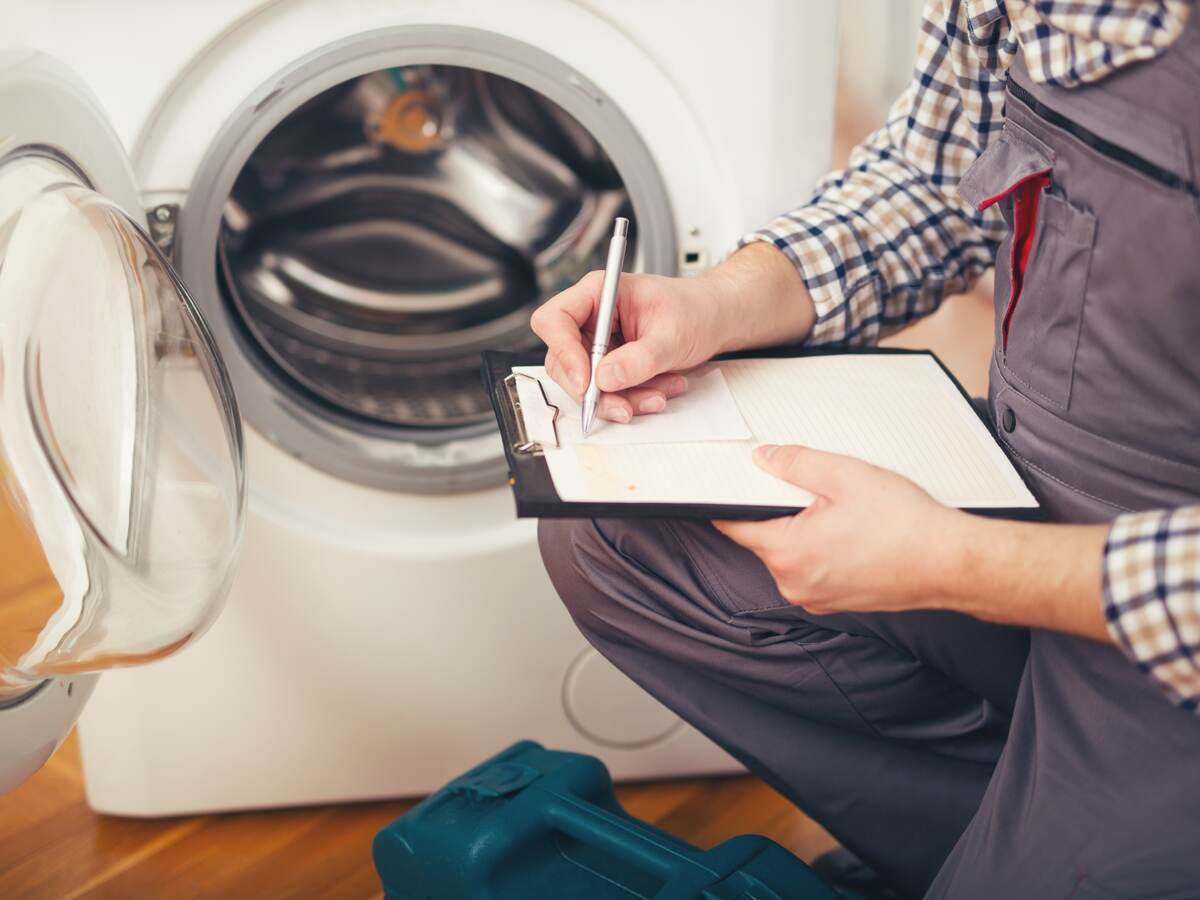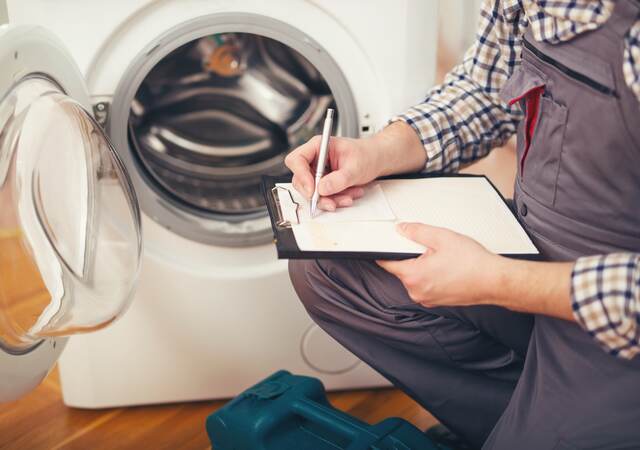A new evaluation has entered the global landscape: repairability. As industries, governments and consumers look for new ways to increase product longevity and extend the time between new product purchases, the epoch of disposable products is receding. “Recycle,” “repurpose” and “reuse” are already well-established themes, and now “repair” is taking its proper place alongside them. Consumer products are now being judged by how much, how long and how easily they can be repaired and maintained, raising hopes for a more sustainable circular economy. The big idea is to cut waste — replacing single-use habits with repair and conserve habits — make goods last longer and reduce planned obsolescence: the purposeful reduction of product life to accelerate product renewal.
In light of this, UL Solutions has created the Repairability Rating Program (RRP), a marketing claim verification program that evaluates an appliance using the best practices outlined in DIN EN 45554:2020, General methods for the assessment of the ability to repair, reuse and upgrade energy-related products. While DIN EN 45554:2020 allows self-assessment and self-declaration, the RRP offers independent third-party assessment under UL 1590, Methodology for Marketing Claim Verification: Product repairability rating (Bronze/Silver/Gold/Platinum/Diamond) with a UL Verification Mark indicating the achieved performance level.
Repairability evaluation
In 2019, the European Committee for Electrotechnical Standardization (CENELEC) got the repairability ball rolling by publishing the standard EN 45554, General methods for the assessment of the ability to repair, reuse and upgrade energy-related products. The standard followed the expanding theme of repair over replacement — even the “right to repair” — which has quickly grown in popularity among European consumers. The European Commission is considering repairability as a horizontal measure that has a strong connection with the Ecodesign Directive, the tool that, to date, has promoted more efficient use and circular economy dynamics to consumers.
Who evaluates repairability?
CENELEC laid the general groundwork for repairability, but it remained to be seen who would oversee its implementation and meaningfully increase the useful life of products. So far, only France has adopted repairability requirements for products, indicated by a self-declared score determined by manufacturers. In that country, the display of repairability scores is required on certain consumer products, and there are fines to back up that requirement, but, as yet, there are no controls on how reliable the self-assessed repairability ratings may be.
The calculating and documenting of repairability by manufacturers can be problematic and potentially lead to unfair competition and consumer deception. To better achieve the objectives of repairability, third-party conformity assessment organizations such as UL Solutions, a global leader in applied safety science and sustainability services, are implementing repairability programs for manufacturers — programs with defined criteria, scientific evaluation and verified results. The RRP has already begun evaluating products in Europe, where repairability is securing its foothold.
What is evaluated for repairability?
For now, repairability evaluation is limited to electrical and electronic equipment (EEE), which includes millions of potential products, but the possibility of what can be evaluated in the future is limitless. In 2021, when France became the first country to institute a repairability index, the first repairability-listed products were electric lawnmowers, laptop computers, mobile phones, televisions and washing machines. Various other electronic devices and appliances have since been included in repairability ratings as the French index expands and other countries and organizations join in the evaluation process. The RRP focuses on appliances and electronic consumer products as well as some other professional and commercial products, but repairability will be expanded to support as many products as possible.
How is repairability evaluated?
Repairability evaluation processes are not yet uniform, but they generally consider similar criteria. The French Repairability Index judges EEE on documentation, disassembly, availability of spare parts, price of spare parts, and product-specific aspects. Each criterion is graded equally and then combined to create an aggregate score out of ten. In theory, the higher the score, the greater the repairability.
Certain repairability scores, however, illustrate the need for fine-tuning the French index — which is currently being reimagined. (A durability index, which combines both repairability and reliability aspects, is scheduled to replace the French Repairability Index in the coming years.) The five French repairability criteria have equal weight, allowing cell phones, for example, to attain favorable overall repairability grades despite poor disassembly scores because of welded or glued spare parts that make some failures non-repairable. As with many new ideas, repairability evaluation is a work in progress, but the French index is a good start and serves as a model for future indexes. Germany and Spain, and more broadly the European Union, are working on their own repairability evaluation systems while Belgium recently announced the formal introduction of a repairability index which mirrors the French one.
The UL Solutions Repairability Rating Program
The RRP includes the primary aspects of the French system and expands to include new factors. The RRP requires such input from manufacturers as a bill of materials (BOM) for each product, cost percentage weight (the economic importance of a part to the overall product), and failure rate data (during or after warranty). At this point, the RRP takes into account the following criteria:
- Disassembly depth
- Fasteners and connectors
- Tools
- Working environment
- Skill level
- Diagnostic support and interfaces
- Availability of spare parts
- Types and availability of information
- Return models for repair
Some criteria are self-evident, but others may need further definition. Working environment, for example, determines the degree of specialization of the environment required to perform a repair. Skill level — which can be the most difficult to quantify — judges the ease of identifying, localizing and accessing a faulty part and assesses any correlated risks of handling the part.
The RRP further refines the index process by dividing EEE into three product categories — household, commercial and professional — each with its own version of the 1.0 to 10.0 grading system, with added classifications for quick identification and reference:
- Bronze – Less than 6
- Silver – 6 to 7
- Gold – 7 to 8
- Platinum – 8 to 9
- Diamond – 9 and above
In the end, the RRP provides a repairability score and class level, results of each product’s top 10 parts according to each criterion, and a recap of criteria allocation (part vs. product). The RRP’s science-based and third-party verified results are rapidly gaining interest in Europe as consumers and manufacturers alike look for more meaningful product ratings. And as the new standard EN 45554 and repairability processes evolve — both in definition and implementation — the RRP will also incorporate changes and improvements as they become available.
Discover how UL Solutions can support manufacturers in evaluating products against measurable repairability criteria. RRP customers can benefit from science-based, third-party verified scores that align with European directions and provide a clear picture of how to correct repairability issues, extend product life and increase consumer satisfaction. Visit the UL Solutions Consumer Electronics services page or contact us for more information.
Sources
- Product Bureau | Circular Economy: Environmental and Waste Management (europa.eu)
- Fixing Europe’s throwaway culture: the science behind the EU’s push for the right to repair (europa.eu)
- Indice de réparabilité - Loi anti-gaspillage (indicereparabilite.fr)
- PR | Belgium becomes the second European country to introduce a reparability index | Zakia Khattabi
Get connected with our sales team
Thanks for your interest in our products and services. Let's collect some information so we can connect you with the right person.



